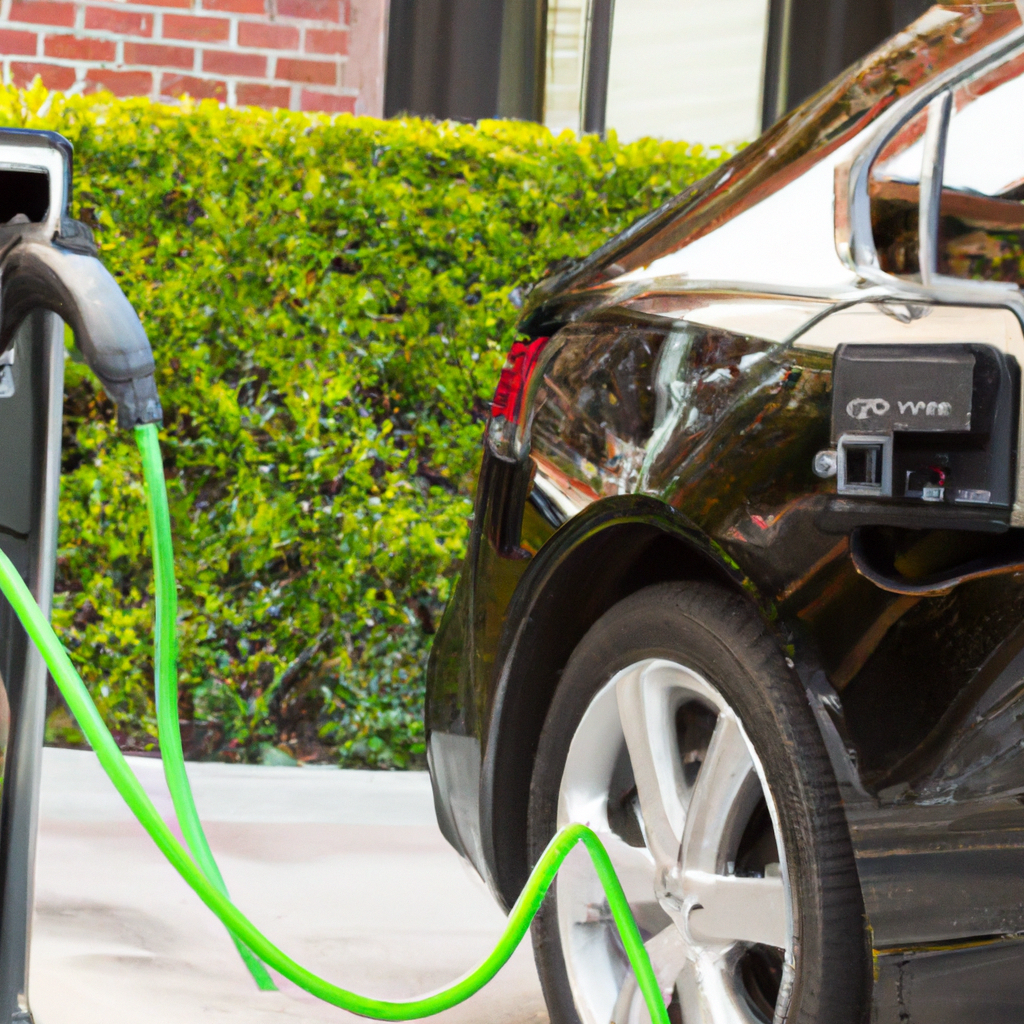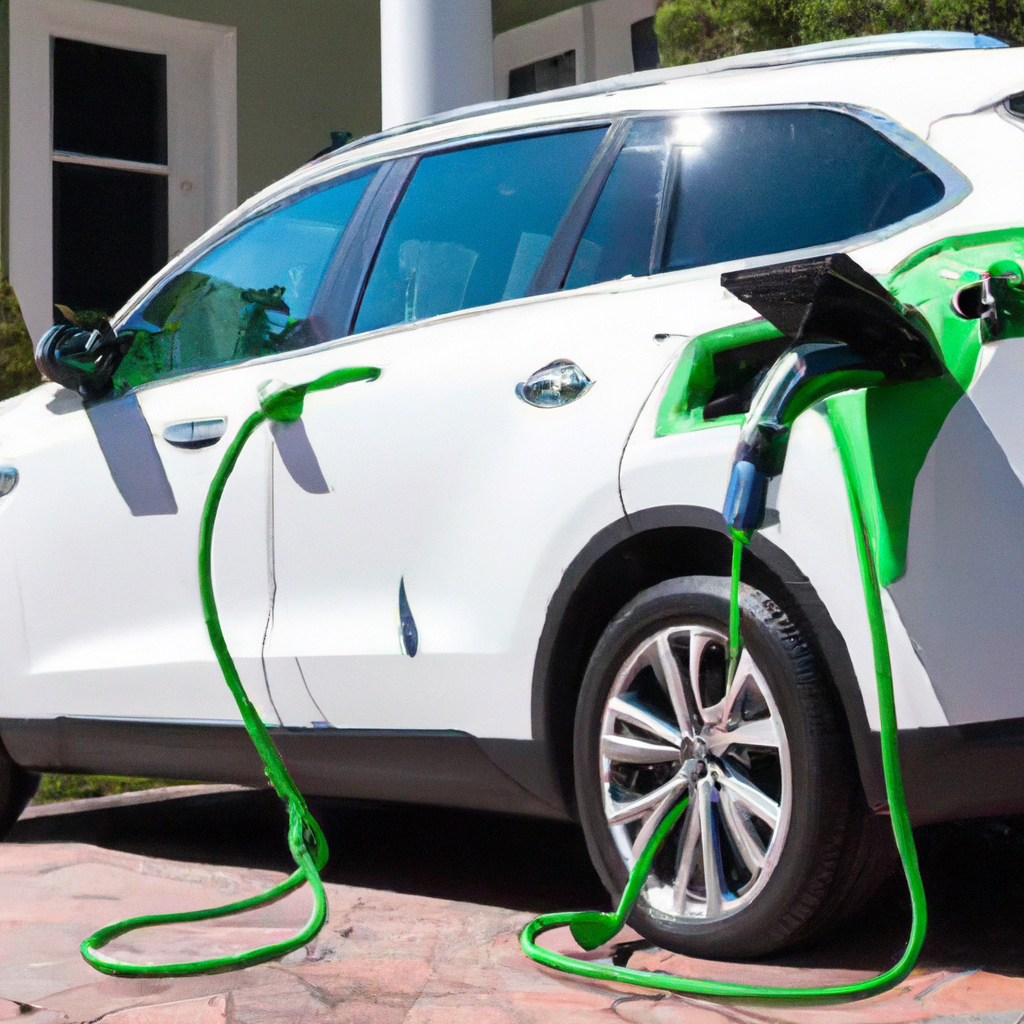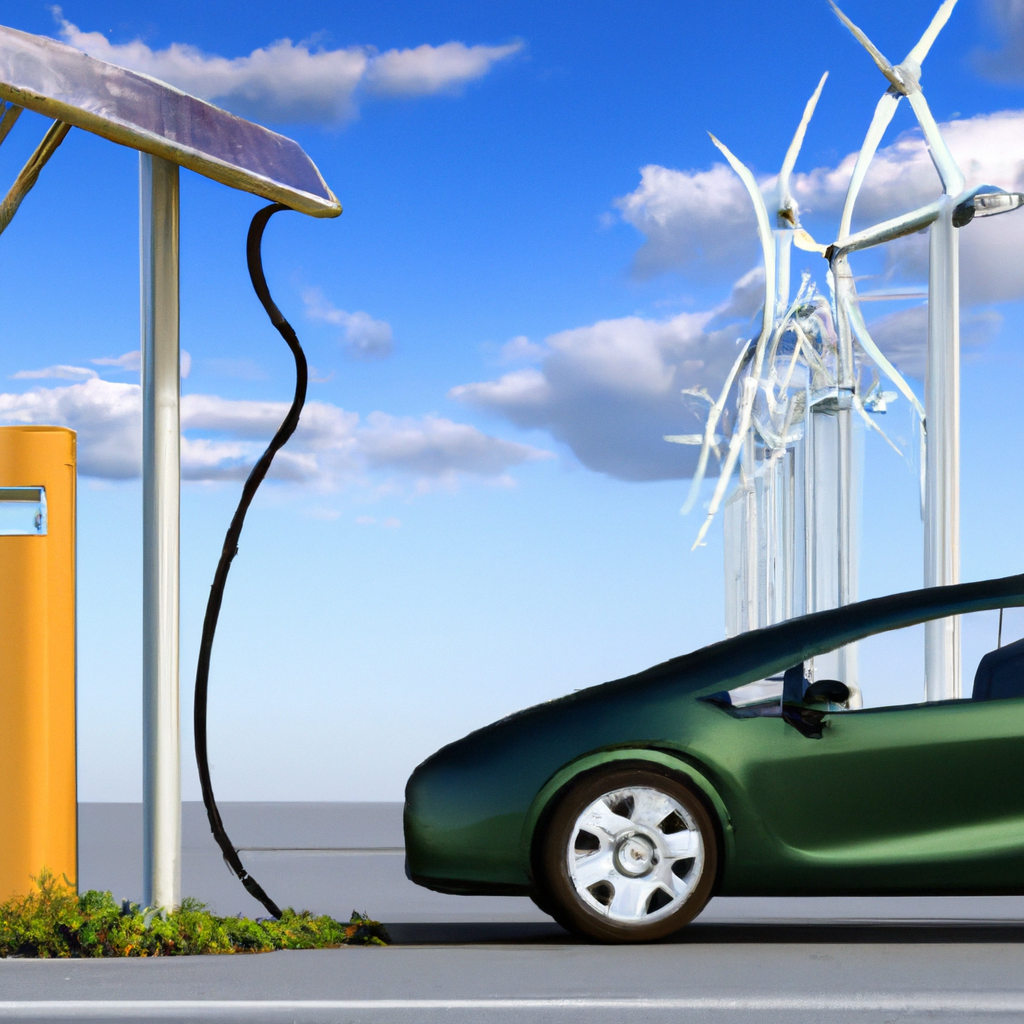
Are you an electric vehicle owner who wants the convenience of charging your car at home? Look no further! In this article, we will explore various residential solutions for electric vehicle charging. Whether you live in an apartment or a house, we have you covered. From basic Level 1 charging to advanced Level 3 options, we will discuss the pros and cons of each solution and help you find the perfect fit for your charging needs. So, get ready to discover the best ways to keep your electric vehicle powered up right from the comfort of your own home.
The Importance of Charging Infrastructure
As electric vehicles (EVs) continue to gain popularity, the need for a reliable and accessible charging infrastructure becomes increasingly significant. The surge in EV adoption has been driven by several factors, including environmental concerns, rising fuel prices, and government incentives. However, without a well-developed charging infrastructure, the full potential of electric vehicles cannot be realized.
The surge in electric vehicle adoption
Over the past decade, there has been a remarkable increase in the adoption of electric vehicles. Advancements in battery technology, increased driving range, and a wider variety of models have made EVs a viable alternative to conventional gasoline-powered vehicles. In fact, global EV sales reached a record 3.2 million in 2020, and this number is expected to grow significantly in the coming years.
The need for reliable home charging solutions
One of the key challenges faced by EV owners is the availability of charging infrastructure. While public charging stations are becoming more common, having a dependable home charging solution is crucial for the convenience and daily use of electric vehicles. Home charging provides EV owners with the flexibility to charge their vehicles overnight or whenever required, offering a practical solution for daily commuting and longer trips.
Benefits of having convenient charging at home
Having a reliable home charging solution offers several advantages for EV owners. Firstly, it eliminates the need to rely solely on public charging stations, which may be limited in availability, occupied, or require long wait times. With home charging, you have the convenience of charging your vehicle at any time, ensuring that it is always ready for use.
Secondly, home charging allows for cost savings in the long run. charging your vehicle at home is generally cheaper than using public charging stations, especially if you take advantage of off-peak electricity rates. By strategically charging your vehicle during low-demand hours, you can significantly reduce your charging costs.
Moreover, home charging provides peace of mind and eliminates range anxiety. With a charging station installed at your residence, you can easily maintain the battery level of your EV, ensuring that you have sufficient range for your daily commute or unexpected trips.
In the following sections, we will explore different home charging options, their benefits, costs, and installation considerations.

Understanding Home Charging Options
When it comes to home charging for electric vehicles, there are three primary levels of charging: Level 1, Level 2, and Level 3. Each level offers different charging speeds, capabilities, and cost considerations.
Level 1 Charging: Basic Home Charging
Level 1 charging refers to the simplest and most basic form of home charging. It involves plugging your EV into a standard residential electrical outlet using the charging cable that comes with the vehicle. Level 1 chargers typically provide a charging rate of around 2-5 miles of range per hour, depending on the vehicle and the available electrical capacity.
Pros of Level 1 chargers include simplicity and affordability. Since Level 1 chargers utilize household electrical outlets, no additional equipment is required, making it a cost-effective solution for EV owners. Furthermore, Level 1 charging is compatible with all EV models, making it widely accessible.
However, there are some limitations to Level 1 charging. The charging rate is relatively slow compared to other options, which may not be ideal for individuals with longer daily commutes or a higher demand for charging. Additionally, relying solely on Level 1 charging may not be sufficient for EV owners who require quicker charging times.
Level 2 Charging: Faster and More Efficient
Level 2 charging offers a significant improvement in charging speed compared to Level 1. It utilizes a dedicated charging station that is installed at the EV owner’s residence. Level 2 chargers typically provide a charging rate of around 10-30 miles of range per hour, depending on the charger’s power output and the vehicle’s specifications.
The benefits of Level 2 charging are numerous. Firstly, the increased charging speed allows for quicker and more efficient charging, making it suitable for individuals with longer daily commutes or a higher demand for charging. Additionally, Level 2 chargers offer various features and capabilities, such as smart charging scheduling and connectivity options.
There are different types of Level 2 charging stations available, including hardwired and plug-in models. Hardwired stations require professional installation and are permanently wired into the electrical system of the residence, offering a more seamless and aesthetically pleasing solution. Plug-in stations, on the other hand, can be easily plugged into existing electrical outlets and provide a more flexible and portable charging option.
The cost of installing a Level 2 charging station may vary depending on factors such as the electrical capacity of the residence and the complexity of the installation. It is recommended to consult with a professional electrician to assess the feasibility and cost of the installation.
Level 3 Charging: High-Speed DC Charging
Level 3 charging, also known as DC fast charging, provides the fastest charging speeds currently available for electric vehicles. Unlike Level 1 and Level 2 chargers, Level 3 chargers utilize high-voltage direct current (DC) power, which allows for rapid charging. These chargers can deliver up to 100 miles of range in as little as 20-30 minutes, depending on the vehicle’s battery capacity and the charging station’s power output.
The advantages of Level 3 chargers are evident when it comes to long-distance travel and quick charging needs. They enable EV owners to replenish their vehicle’s battery quickly, reducing waiting times and allowing for extended trips without range anxiety. Level 3 charging stations are typically found in public places such as highway rest areas, shopping centers, and commercial parking lots.
However, there are some challenges associated with Level 3 charging. Firstly, the installation of Level 3 chargers requires significant electrical infrastructure and higher power capacity, making it more complex and costly compared to Level 1 and Level 2 charging. Additionally, Level 3 chargers may not be compatible with all EV models, as not all vehicles are equipped with the necessary charging capabilities.
When considering Level 3 charging, it is important to assess your charging needs and evaluate the availability and compatibility of these charging stations in your area.
In the next sections, we will delve into the factors that should be considered before installing home charging, the installation process, the integration of EV charging with smart home technology, and the advantages of taking advantage of time-of-use pricing.

Factors to Consider Before Installing Home Charging
Before installing a home charging solution, there are several factors that you should consider to ensure a seamless and efficient charging experience.
Assessing your charging needs
The first step is to assess your charging needs based on your driving habits, daily commuting distance, and other factors. Understanding your charging requirements will help you determine the appropriate charging level and capacity for your home charging solution.
If you have a short daily commute and primarily use your EV for local trips, Level 1 charging may be sufficient for your needs. However, if you have longer commutes or require quicker charging times, Level 2 or Level 3 charging may be more suitable.
Understanding your home’s electrical capacity
The next consideration is to evaluate your home’s electrical capacity. Different charging levels require varying levels of power supply, and it is crucial to ensure that your electrical system can handle the additional load.
Consulting with a professional electrician is recommended to assess the adequacy of your electrical capacity and determine any necessary upgrades or modifications to accommodate the charging equipment.
Determining installation feasibility
Once you have determined your charging needs and assessed your home’s electrical capacity, you need to evaluate the feasibility of installation. Consider factors such as available space for the charging equipment, accessibility, and any restrictions or regulations imposed by your homeowner’s association or local authorities.
In some cases, installation may require permits or coordination with utility companies. It is essential to familiarize yourself with the necessary procedures and requirements to ensure a smooth installation process.
Cost considerations and available incentives
Finally, you should consider the cost of installing a home charging solution and explore any available incentives or rebates. The cost may include the purchase or installation of the charging equipment, necessary electrical upgrades, and ongoing energy costs.
Researching available incentives, such as federal tax credits or local utility rebates, can help offset some of the installation costs and make home charging more affordable. Additionally, considering the potential cost savings associated with charging at home compared to public charging stations can provide a clear financial advantage in the long run.
In the next section, we will discuss the installation process for home charging, including permits, hiring a professional electrician, and choosing a suitable charging station.

Home Charging Installation Process
Installing a home charging solution involves several steps to ensure a safe and efficient charging experience. It is important to follow the proper installation procedures and comply with any applicable regulations.
Required permits and regulatory considerations
Before beginning the installation process, it is essential to determine if any permits or regulatory approvals are required. This may vary depending on your location and local regulations. Contacting your local building department or utility company can provide you with the necessary information and guidance.
Obtaining the required permits ensures that the installation is done in compliance with local safety standards and regulations, safeguarding both you and your property.
Hiring a professional electrician
To ensure a safe and efficient installation, it is recommended to hire a professional electrician who is experienced in EV charging installations. An electrician can assess your electrical system, determine the appropriate charging equipment, and ensure that the installation is done correctly and in compliance with relevant codes and regulations.
When selecting an electrician, it is important to choose someone who is licensed, insured, and knowledgeable about EV charging installations. Requesting references and obtaining multiple quotes can help you find a qualified electrician who meets your requirements.
Choosing a suitable charging station
There are various charging stations available in the market, each with its features, capabilities, and compatibility with different EV models. When choosing a charging station, consider factors such as power output, charging speed, connectivity options, and additional features like smart charging capabilities.
It is recommended to select a charging station from a reputable manufacturer or supplier and ensure that it is compatible with your electric vehicle. Consulting with your electrician or contacting the manufacturer directly can help you make an informed decision and choose a charging station that meets your specific needs.
Installation steps and safety precautions
The installation process typically involves mounting the charging station, making the necessary electrical connections, configuring any required settings, and conducting thorough testing to ensure functionality and safety. It is important to follow the manufacturer’s instructions and consult with your electrician throughout the installation process.
Safety precautions should be taken during installation to prevent electrical hazards and ensure a safe charging environment. These may include properly grounding the charging station, using the correct size and type of wiring, and adhering to all applicable safety guidelines.
By following the proper installation procedures and taking necessary safety precautions, you can ensure a reliable and efficient home charging solution that meets your needs.
In the next section, we will explore the concept of smart home integration for EV charging and the benefits it offers.

Smart Home Integration for EV Charging
As technology continues to advance, the concept of smart home integration has become increasingly popular. Smart home integration involves connecting and controlling various devices and systems within your home through a central platform or smartphone app.
The concept of smart home integration
When it comes to EV charging, smart home integration allows you to connect your charging station to your smart home ecosystem, enabling enhanced control, monitoring, and automation capabilities.
By integrating your EV charging with your smart home, you can remotely monitor and control your charging sessions, receive real-time charging updates, and even schedule charging sessions to take advantage of time-of-use pricing or other cost-saving opportunities.
Benefits of integrating EV charging with smart home
There are numerous benefits to integrating your EV charging with your smart home system. Firstly, it provides added convenience and flexibility. With smart home integration, you can start or stop charging, monitor charging progress, and receive notifications directly from your smartphone or smart home hub. This saves you the hassle of physically accessing the charging station or relying on third-party mobile apps.
Secondly, smart home integration allows for better energy management. By analyzing your energy consumption patterns and understanding your charging needs, smart home systems can optimize your charging sessions based on factors such as time-of-use pricing or the availability of renewable energy.
Furthermore, smart home integration enables seamless integration with other smart devices and energy management systems in your home. For example, you can integrate your EV charging with solar panels, battery storage systems, or smart thermostats, creating a comprehensive and efficient energy ecosystem.
Available technologies and platforms
Several technologies and platforms are available for smart home integration of EV charging. These may include Wi-Fi or cellular connectivity, smart charging apps, and integration with popular smart home ecosystems such as Amazon Alexa or Google Home.
When selecting a charging station for smart home integration, it is important to ensure compatibility with your preferred smart home platform and evaluate the available features and capabilities. Manufacturers or suppliers can provide information on the compatibility and integration options for their charging stations.
Enhanced control and monitoring capabilities
By integrating EV charging with your smart home, you gain enhanced control and monitoring capabilities. You can remotely start or stop charging, set charging schedules based on specific preferences or time-of-use pricing, and receive real-time notifications about your charging sessions.
Additionally, smart home integration allows you to monitor the energy consumption of your EV charging, providing valuable insights into your energy usage and potential cost savings. This information can help you make informed decisions about your charging patterns and optimize your energy usage accordingly.
In the next section, we will discuss the benefits of taking advantage of time-of-use pricing for EV charging and how it can maximize cost savings.

Taking Advantage of Time-of-Use Pricing
Time-of-use pricing is a billing structure employed by utilities, where the cost of electricity varies throughout the day based on the demand and supply. By understanding and capitalizing on time-of-use pricing, EV owners can maximize cost savings and reduce their charging expenses.
Understanding time-of-use pricing
With time-of-use pricing, electricity rates are typically divided into different time periods, including peak, off-peak, and shoulder periods. Peak periods are characterized by high demand and higher electricity rates, while off-peak periods have lower demand and lower rates. Shoulder periods fall between peak and off-peak and may have intermediate rates.
The specific time periods and rates may vary depending on your location and utility provider. It is important to familiarize yourself with these time periods and rates to take full advantage of time-of-use pricing.
Benefits of charging during off-peak hours
One of the primary benefits of time-of-use pricing is the opportunity to charge your EV during off-peak hours when electricity rates are lower. By strategically scheduling your charging sessions during these periods, you can significantly reduce your charging costs and maximize cost savings.
Off-peak charging not only saves you money but also helps reduce the strain on the electrical grid during peak hours. This promotes a more balanced and efficient use of electricity resources, benefiting both the utility provider and the environment.
Using smart charging scheduling
Smart charging scheduling is a feature offered by some charging stations and smart home platforms that enables you to automate your charging sessions based on time-of-use pricing or specified preferences. By specifying your preferred charging periods or time-of-use rates, you can create a charging schedule that aligns with the lowest electricity rates.
Smart charging scheduling takes into account factors such as your EV’s battery capacity, your daily driving requirements, and the available off-peak charging periods. It ensures that your vehicle is charged to the desired level by the time you need it, while also taking advantage of lower electricity rates.
Maximizing cost savings with EV charging
By combining time-of-use pricing with smart charging scheduling and smart home integration, EV owners can maximize cost savings and optimize their charging expenses. By understanding the time periods with the lowest electricity rates and utilizing smart charging features, you can achieve significant reductions in charging costs over time.
In addition to cost savings, taking advantage of time-of-use pricing promotes energy efficiency, reduces the strain on the electrical grid, and contributes to a more sustainable and responsible use of resources.
In conclusion, the availability of a reliable and convenient home charging solution is crucial to the widespread adoption of electric vehicles. The surge in EV adoption has resulted in the need for a well-developed charging infrastructure that includes accessible and efficient home charging options.
Understanding the different levels of home charging, such as Level 1, Level 2, and Level 3, allows EV owners to choose the appropriate charging solution based on their needs, charging speed requirements, and budget considerations. Assessing your charging needs, evaluating your home’s electrical capacity, and considering installation feasibility are important factors to consider before installing home charging.
Home charging installation should be done in compliance with local regulations and safety guidelines. Hiring a professional electrician, obtaining the necessary permits, and selecting a suitable charging station are essential steps in ensuring a safe and efficient installation process.
Integrating EV charging with smart home technology offers numerous benefits, including enhanced control, monitoring capabilities, and energy management. By connecting your EV charging with your smart home ecosystem, you can remotely control and monitor your charging sessions, optimize energy usage based on time-of-use pricing, and integrate with other smart devices for a comprehensive energy ecosystem.
Finally, taking advantage of time-of-use pricing can enable EV owners to maximize cost savings. By scheduling charging sessions during off-peak hours when electricity rates are lower, utilizing smart charging scheduling, and optimizing energy usage, EV owners can significantly reduce their charging expenses and promote energy efficiency.
In conclusion, having a reliable and convenient home charging solution, along with smart home integration and time-of-use pricing optimization, is essential for the continued growth of electric vehicle adoption. By choosing the right residential charging option, EV owners can enjoy the benefits of EV ownership while contributing to a sustainable and greener future.
RELATED POSTS
View all


